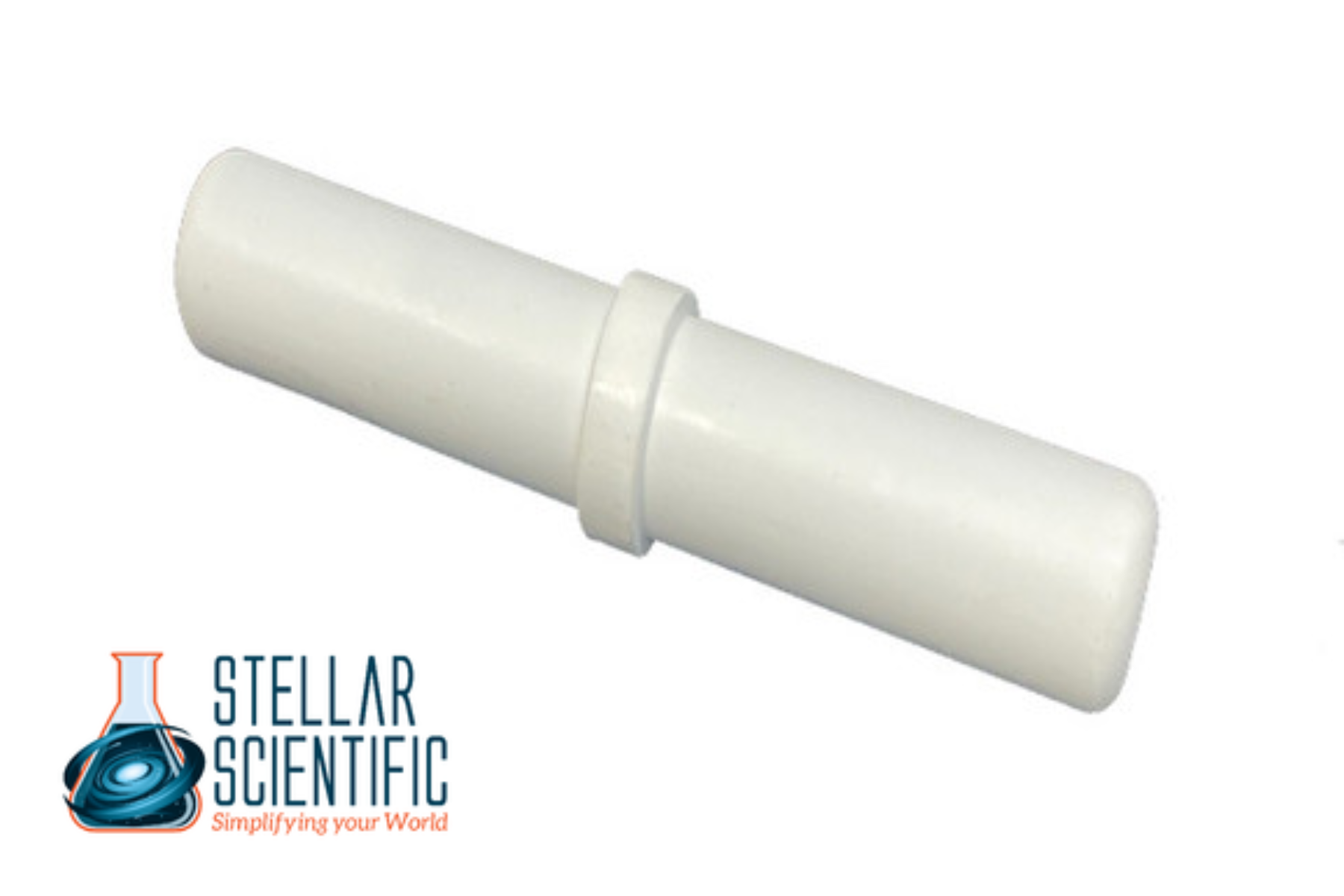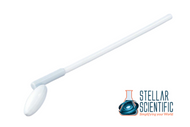The Role of Stir Bars in Successful Lab Work
17th Apr 2025
In any laboratory, precision and consistency are key factors in ensuring accurate results. One often overlooked tool that plays a critical role in achieving these goals is the stir bar. Despite their simplicity, stir bars are indispensable in scientific experimentation, particularly when working with liquids or mixtures that require uniform mixing. Whether in chemical reactions, biological research, or analytical testing, stir bars serve as an essential part of lab work.
In this article, we’ll explore what stir bars are, why they’re used, and how they contribute to successful lab work. We’ll also discuss some key factors to consider when choosing stir bars for your laboratory needs.

What Are Stir Bars?
A stir bar, also known as a magnetic stir bar or flea, is a small, typically cylindrical, magnetic object used to stir liquids in laboratory settings. It is usually made of chemically resistant materials such as Teflon and filled with a magnetic material like iron powder. Stir bars are used in conjunction with a magnetic stirrer (a type of laboratory equipment) to provide continuous and uniform mixing of liquids or solutions.
The stir bar is placed inside a container, such as a beaker or flask, and is magnetically rotated by a magnetic field generated by the stirrer. This motion allows the stir bar to mix the contents effectively without the need for manual stirring.
The Importance of Stir Bars in Laboratory Work
1. Uniform Mixing and Consistency
One of the main reasons stir bars are so crucial in lab work is their ability to ensure uniform mixing of liquids or solutions. In many experiments, consistency is essential, especially when dealing with chemical reactions or biological samples. Stir bars facilitate even distribution of solutes, solvents, and reagents, ensuring that every part of the solution is uniformly mixed. This consistency helps improve the reproducibility of experiments and ensures that results are not skewed due to uneven mixing.
2. Prevention of Sample Contamination
Manual stirring can lead to contamination, especially when working with volatile chemicals or sensitive biological samples. When you use a stir bar, mixing is done without direct contact with the liquid, reducing the risk of introducing contaminants from the person performing the work. Additionally, magnetic stir bars are especially beneficial in closed systems where contamination from external sources must be minimized.
3. Efficient and Hands-Free Operation
Stir bars offer hands-free operation, allowing researchers to focus on other aspects of the experiment. The magnetic stirrer ensures continuous mixing without the need for human intervention, providing researchers with more time to conduct other tasks or observe results. This efficiency is especially important in high-throughput laboratories or when dealing with large volumes of solutions.
4. Enhanced Safety
In labs where hazardous chemicals or volatile substances are involved, using a stir bar can enhance safety. Since the stir bar operates without any direct contact with the liquid, researchers can avoid exposure to harmful chemicals or reactions. Moreover, the steady, controlled mixing process reduces the chance of accidents such as spills or splashing that might occur with manual stirring.
5. Cost-Effective Solution
Stir bars are a relatively low-cost tool compared to other mixing methods or equipment. Unlike mechanical agitators, which can be bulky and require maintenance, stir bars are simple, durable, and require minimal upkeep. They can also be reused multiple times, making them a cost-effective choice for routine laboratory procedures.
Types of Stir Bars and Their Applications
Stir bars come in various shapes, sizes, and materials to suit different laboratory needs. The choice of stir bar depends on the specific requirements of the experiment, such as the viscosity of the liquid, the type of container being used, and the nature of the substances being mixed.
1. Standard Stir Bars
The most common type of stir bar is the standard cylindrical stir bar, which is suitable for a wide range of liquid mixing tasks. These bars are typically used for general-purpose mixing and are available in different sizes to accommodate various container volumes.
2. Oval and Triangular Stir Bars
For certain applications where precise mixing in narrower or more irregularly shaped containers is required, oval or triangular stir bars are preferred. These stir bars are designed to fit better in specific lab glassware and help achieve a more efficient mixing process.
3. Stir Bars with External Coating
Stir bars with external coatings (such as Teflon or glass) are designed to provide chemical resistance to highly corrosive substances. These coatings prevent the stir bar from reacting with aggressive chemicals, ensuring long-lasting use in harsh conditions. Teflon-coated stir bars are commonly used in chemical laboratories due to their ability to withstand a wide range of solvents and acids.
4. Heavy-Duty Stir Bars
For high-viscosity liquids, such as oils, gels, or thick suspensions, heavy-duty stir bars with larger magnetic cores and increased torque are necessary. These stir bars can handle more resistant liquids and ensure smooth, consistent stirring even in challenging conditions.
5. Fluorescent Stir Bars
Fluorescent stir bars are often used in experiments where monitoring the stir bar’s position or tracking the mixing process is necessary. These stir bars contain a fluorescent dye, making them visible under UV light, which is particularly useful in certain biological or chemical applications where visual tracking is important.
Choosing the Right Stir Bar
Selecting the right stir bar for your lab work is essential to achieving optimal results. Consider the following factors when choosing a stir bar for your experiments:
1. Size and Shape
Ensure that the stir bar fits comfortably within the container you’re using. A stir bar that is too large for the vessel may not move properly, while a bar that is too small may not provide effective mixing. The shape of the stir bar should also be compatible with the geometry of the container.
2. Material Compatibility
A high-quality stir bar is essential in experiments where it's exposed to various chemicals, so it’s important to choose one made from materials that are chemically resistant to the substances in your experiment. For example, Teflon-coated stir bars are ideal for use in laboratories working with harsh chemicals, as they won’t react with most solvents or acids.
3. Magnetic Strength
The strength of the magnet inside the stir bar is another important factor. A stronger magnet will be more effective at stirring thicker solutions or larger volumes. In contrast, a weaker magnet may be more suitable for lighter, less viscous liquids.
Tips for Using Stir Bars Effectively
- Use the correct stir bar size. The stir bar should fit comfortably within the container, allowing enough room for it to rotate without obstruction.
- Avoid overheating. If the stir bar is used in a high-temperature environment, ensure that it is designed to withstand the heat.
- Check for wear and tear. Over time, stir bars can wear down, particularly if they are used with abrasive materials. Regularly inspect stir bars for damage and replace them when necessary.
- Clean the stir bar. After each use, clean the stir bar thoroughly to remove any residues or contaminants that may have adhered to it.
About Stellar Scientific
At Stellar Scientific, we understand the critical role that lab tools like stir bars play in successful research and experimentation. We offer a wide range of high-quality laboratory equipment, including magnetic stir bars, stirrers, and accessories, all designed to meet the diverse needs of researchers, educators, and laboratory professionals.
Our products are sourced from trusted manufacturers, ensuring durability, precision, and reliability for every application. Whether you're working with simple solutions or complex chemical reactions, our lab equipment helps streamline your workflow and achieve accurate, reproducible results.

